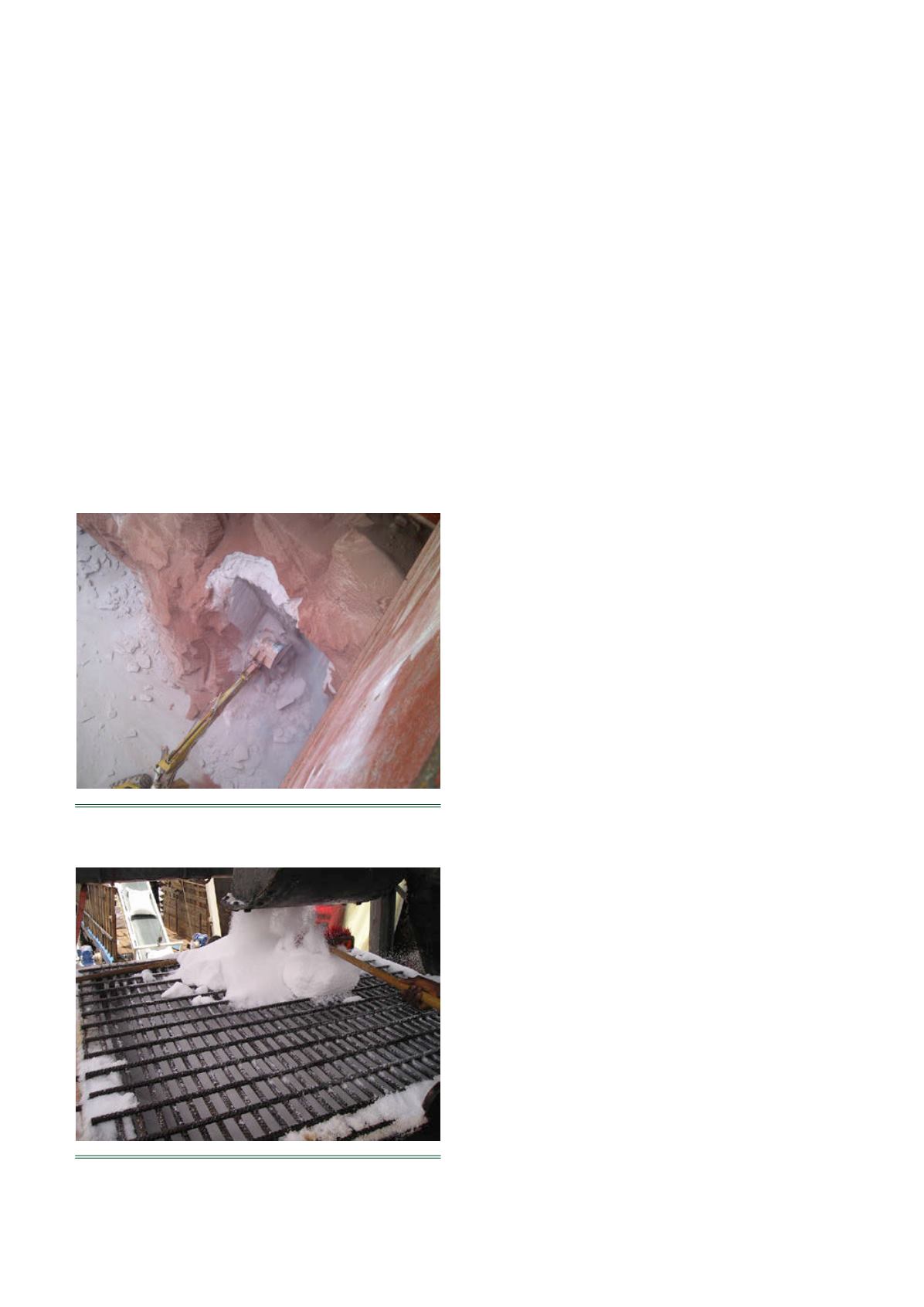
104
| WORLD FERTILIZER |
NOVEMBER 2016
n
n
Solutions and techniques available to deal with problems.
n
n
Potential benefits to the end-user.
The Nectar Group manages several bulk ports in
Africa and the Far East and operates a range of handling
equipment in ports across the world, with a specific
focus on handling dry bulk products, such as fertilizers.
The group has handled millions of tonnes of bulk
fertilizers in developing countries over the last 45 years.
Characteristics of fertilizer handling
The most commonly handled fertilizers shipped in bulk
to markets around the world include urea, DAP, NPK,
MOP and MAP. Typically they all show hydroscopic
tendencies that can create ‘damp’ product; however it is
possible for the suppliers to add anti-caking agents to
reduce the effect that moisture has on the material.
Some fertilizers are more prone to ‘lumping’ than others,
such as DAP, which will require additional handling
techniques. The humidity of the tropics mixed with
fluctuating day and night time temperatures can be a
great recipe to create, quite literally, rock solid fertilizers.
From a terminal operator’s point of view, the timely
discharge of the vessels without incurring demurrage
costs or cargo degradation and shrinkage during the
discharge is an important consideration. However the
discharge operation of such cargoes is just one element
of the logistics cycle that stretches from the supplier to
the shipper to the receiver/end-user. The problems that a
terminal operator experiences at the point of discharge
could potentially emanate from shortcomings throughout
the treatment of fertilizers along the logistics chain
before reaching the port of discharge. These oversights
can lead to the deterioration of cargo quality and/or
cargo losses, which presents a variety of problems for all
the parties involved in the logistics chain and, not least,
for the receiver who expects to receive the goods in a
certain condition.
Shipping logistics
For a terminal operator handling fertilizers in a
developing country where remedial resources and
handling equipment can be limited or not available,
discharge operations can prove to be very costly.
There are three key stages in the logistics cycle of
handling fertilizers from shipper to end-user, where
careful consideration is the key to maintaining integrity
of the cargo throughout. These are: the preparation and
shipping of the cargo; the handling of the cargo at the
discharge port; and the direct or indirect delivery to the
end-user from the port.
At the first stage, the shipper has a responsibility to
ensure that the physical characteristics of the cargo
offered at the loading facility from the plant is exactly
what is contracted. Any processes that assist the fertilizer
to maintain its free-flowing properties, such as prilling of
urea cargoes, need to be carried out carefully before
shipping. The quality of the process, as well as proper
inspection and validation of the process before approval
of the cargo for loading, are important steps to maintain
quality.
The hydroscopic property of many types of fertilizers
is inherent in nature and, in order to minimise the
detrimental effect of such properties, cargo temperature
and atmospheric conditions at the load port need to be
carefully monitored during the loading process and
before closing the vessel’s hatches so no problematic
conditions are created upon arrival at the discharge port.
When the fertilizer continues to draw in moisture as it
cools down and loses its free-flowing properties, it
becomes very difficult to handle. Care should be taken to
interrupt loading operation when critical tolerance levels
are reached to minimise costly remedial action further
down the chain.
It is equally important for shippers to provide the
master of the ship with a detailed cargo datasheet as
well as specific instructions as to the care of the cargo
during the sea voyage. The specific instructions related to
the ventilation and temperature control during the sea
voyage and taking into consideration the different
climate conditions between the load and discharge ports
is crucial. The ship should not only carry out such
Figure 2.
Handling of moist or lumpy cargo affects the
entire chain.
Figure 1.
Discharging hardened fertilizer from a vessel’s
hold is challenging and costly.


